n March 13th, 2023, astronomers around the world will mark the 10th anniversary of the inauguration of the Atacama Large Millimeter/submillimeter Array (ALMA), the world’s largest radio telescope. Over the past decade, the international ALMA collaboration— led by the U.S. National Science Foundation’s National Radio Astronomy Observatory (NRAO), the European Southern Observatory (ESO), and the National Astronomical Observatory of Japan (NAOJ)— has revolutionized our understanding of the Universe and unveiled its secrets, from the formation of planets, stars, and galaxies to deciphering the chemistry of the cosmos, and even taking part in capturing the first images of black holes.
Tag: ALMA telescope
Resultados sin precedentes de HL Tau alcanzados por ALMA en 2014 superan las 1000 citaciones en menos de una década
Los datos observacionales sin precedentes de HL Tau obtenidos por el Atacama Large Millimeter/submillimeter Array (ALMA) en 2014 han sido citados en más de mil estudios científicos en los últimos 7 años y medio. Ello ha permitido que la comunidad astronómica logre importantes avances en el estudio de la formación de planetas.El hito se produce cuando los ingenieros del Observatorio Nacional de Radioastronomía (NRAO) de la Fundación Nacional de Ciencias de EE. UU. se embarcan en ambiciosas actualizaciones de los receptores responsables de la claridad de las observaciones iniciales.
ALMA’s 2014 Ground-Breaking HL Tau Results Have Appeared in Over 1,000 Scientific Papers in Less Than a Decade
Ground-breaking 2014 HL Tau observational data from the Atacama Large Millimeter/submillimeter Array (ALMA) has been cited in more than 1,000 scientific studies in the past 7.5 years, aiding in major breakthroughs in scientists’ understanding of planet formation. The milestone comes as engineers at the U.S. National Science Foundation’s National Radio Astronomy Observatory (NRAO) embark on ambitious upgrades to the receivers responsible for the clarity of initial observations.
ALMA gets front-row seat to an ongoing star-formation standoff in the Large Magellanic Cloud
While using the Atacama Large Millimeter/submillimeter Array (ALMA) to observe large star-forming regions in the Large Magellanic Cloud (LMC), scientists discovered a turbulent push-and-pull dynamic in the star-forming region, 30 Doradus. Observations revealed that despite intense stellar feedback, gravity is shaping the molecular cloud, and against scientific odds, is driving the ongoing formation of young, massive stars. The observations were presented today in a press conference at the 240th meeting of the American Astronomical Society (AAS) in Pasadena, California, and are published in The Astrophysical Journal (ApJ).
Science Results From NRAO Facilities to Be Presented at Multiple AAS 240 Press Conferences
Seven new scientific results from the Atacama Large Millimeter/submillimeter Array (ALMA), the Very Large Array (VLA), and the Very Large Array Sky Survey (VLASS) will be revealed at multiple press conferences during the 240th meeting of the American Astronomical Society (AAS) between June 13-15, 2022 in Pasadena, California.
Scientists Find Elusive Gas From Post-starburst Galaxies Hiding in Plain Sight
Post-starburst galaxies were previously thought to scatter all of their gas and dust—the fuel required for creating new stars—in violent bursts of energy, and with extraordinary speed. Now, new data from the Atacama Large Millimeter/submillimeter Array (ALMA) reveals that these galaxies don’t scatter all of their star-forming fuel after all. Instead, after their supposed end, these dormant galaxies hold onto and compress large amounts of highly-concentrated, turbulent gas. But contrary to expectation, they’re not using it to form stars.
ALMA revela entornos de nacimiento de planetas orgánicos ricos en carbono
Una colaboración internacional de científicos utilizó el Atacama Large Millimeter/submillimeter Array (ALMA) para completar el mapeo de composición química más extenso que exista de los discos protoplanetarios alrededor de cinco estrellas jóvenes cercanas en alta resolución. De esta manera, generaron imágenes que capturan la composición molecular asociada a nacimientos planetarios, y una hoja de ruta para futuros estudios sobre la composición de las regiones de formación de planetas y cometas. La nueva investigación revela pistas sobre el rol de las moléculas en la formación del sistema planetario y si estos jóvenes sistemas planetarios en formación tienen lo que se necesita para albergar vida.
ALMA Reveals Carbon-Rich, Organic Birth Environments of Planets
An international collaboration of scientists using the Atacama Large Millimeter/submillimeter Array (ALMA) has completed the most extensive chemical composition mapping of the protoplanetary disks around five nearby young stars at high resolution, producing images that capture the molecular composition associated with planetary births, and a roadmap for future studies of the makeup of planet- and comet-forming regions.
New Receivers Achieve First Light, Set Record for Observational Capabilities at ALMA
A new set of receivers installed on antennas at the Atacama Large Millimeter/submillimeter Array (ALMA) have achieved first light. With it, they set a new record for the longest wavelengths visible with the radio array.
Scientists Observe Gas Re-accretion in Dying Galaxies for the First Time
A new study from scientists using the Atacama Large Millimeter/submillimeter Array (ALMA) suggests that previously displaced gases can re-accrete onto galaxies, potentially slowing down the process of galaxy death caused by ram pressure stripping, and creating unique structures more resistant to its effects.
Científicos observan por primera vez reacreción de gas en galaxias moribundas
Un nuevo estudio realizado con datos del Atacama Large Millimeter/submillimeter Array (ALMA) postula que nubes de gas previamente desplazadas pueden volver a acumularse y formar nuevas galaxias mediante acreción, ralentizando de esa forma el proceso de despojo por presión que causa la extinción de las galaxias y creando estructuras únicas más resistentes a dicho fenómeno.
No olviden el surco: científicos usan masa estelar para establecer vínculo entre exoplanetas y discos protoplanetarios
A partir de los datos de más de 500 estrellas jóvenes observadas con el Atacama Large Millimeter/Submillimeter Array (ALMA), los científicos descubrieron un vínculo directo entre las estructuras de los discos protoplanetarios (los discos que rodean a las estrellas y donde se forman planetas nuevos) y las características demográficas de los planetas que allí nacen.
Mind the Gap: Scientists Use Stellar Mass to Link Exoplanets to Planet-Forming Disks
Data from 500 young stars observed with the Atacama Large Millimeter/submilliter Array (ALMA) is giving scientists a window back through time, allowing them to predict what exoplanetary systems looked like through each stage of their formation. And it all starts with a link between higher mass stars, disks with gaps in them, and a high occurrence of observed exoplanets.
Study of Young Chaotic Star System Reveals Planet Formation Secrets
A team of scientists using the Atacama Large Millimeter/submillimeter Array (ALMA) to study the young star Elias 2-27 have confirmed that gravitational instabilities play a key role in planet formation, and have for the first time directly measured the mass of protoplanetary disks using gas velocity data, potentially unlocking one of the mysteries of planet formation.
Cosmic cartographers map the nearby Universe revealing the diversity of star-forming galaxies
A team of astronomers using the Atacama Large Millimeter/submillimeter Array (ALMA) has completed the first census of molecular clouds in the nearby Universe. The study produced the first images of nearby galaxies with the same sharpness and quality as optical imaging and revealed that stellar nurseries do not all look and act the same. In fact, they’re as diverse as the people, homes, neighborhoods, and regions that make up our own world.
Record-breaking stellar flare from nearby star recorded in multiple wavelengths for the first time
Scientists using the Atacama Large Millimeter/submillimeter Array (ALMA) observed a record-breaking stellar flare from Proxima Centauri. The study also marks the first time that a powerful stellar flare, other than those from the Sun, has been observed with such complete wavelength coverage.
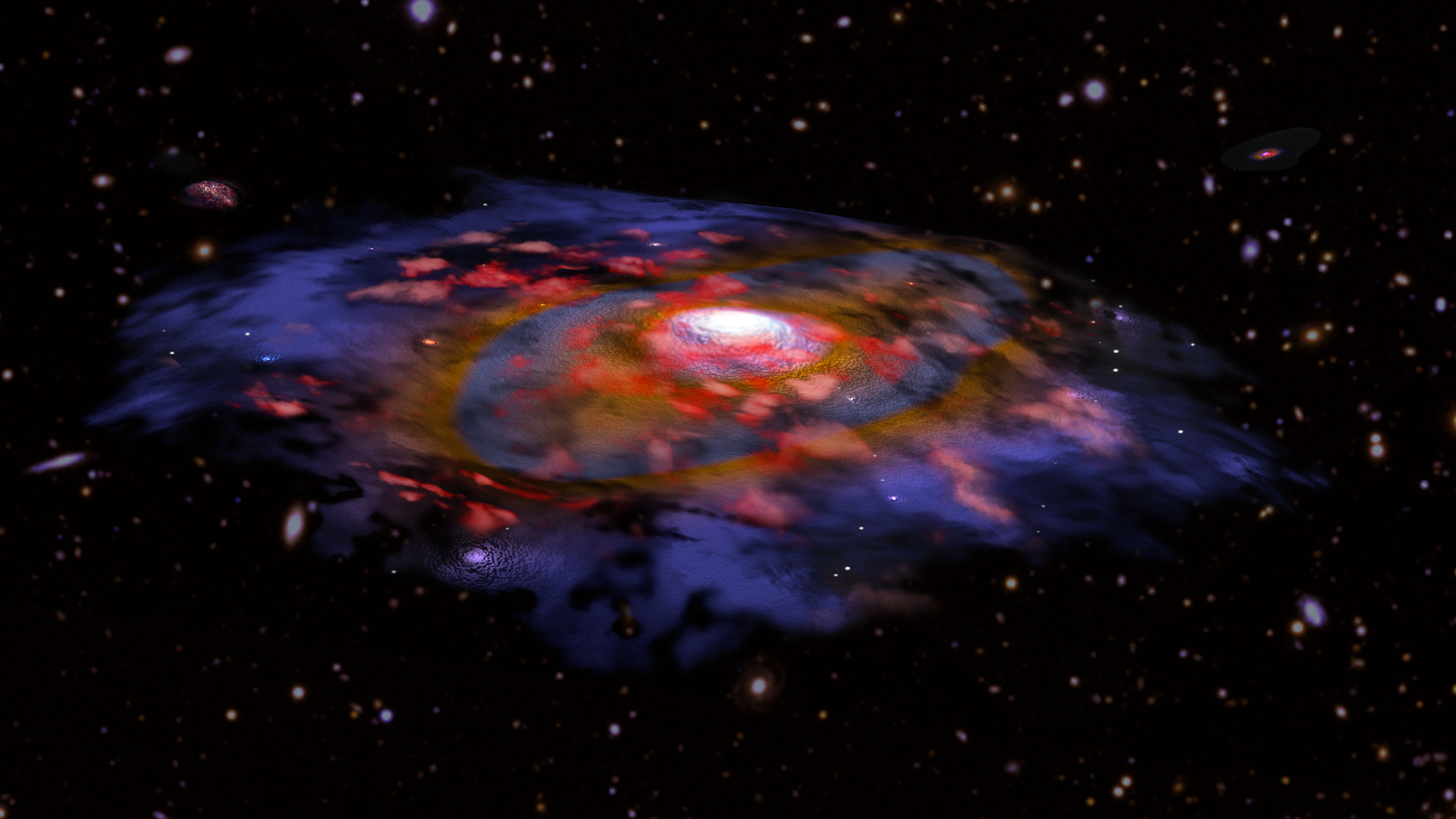
Galaxies in the Infant Universe Were Surprisingly Mature
ALMA telescope conducts largest survey yet of distant galaxies in the early universe
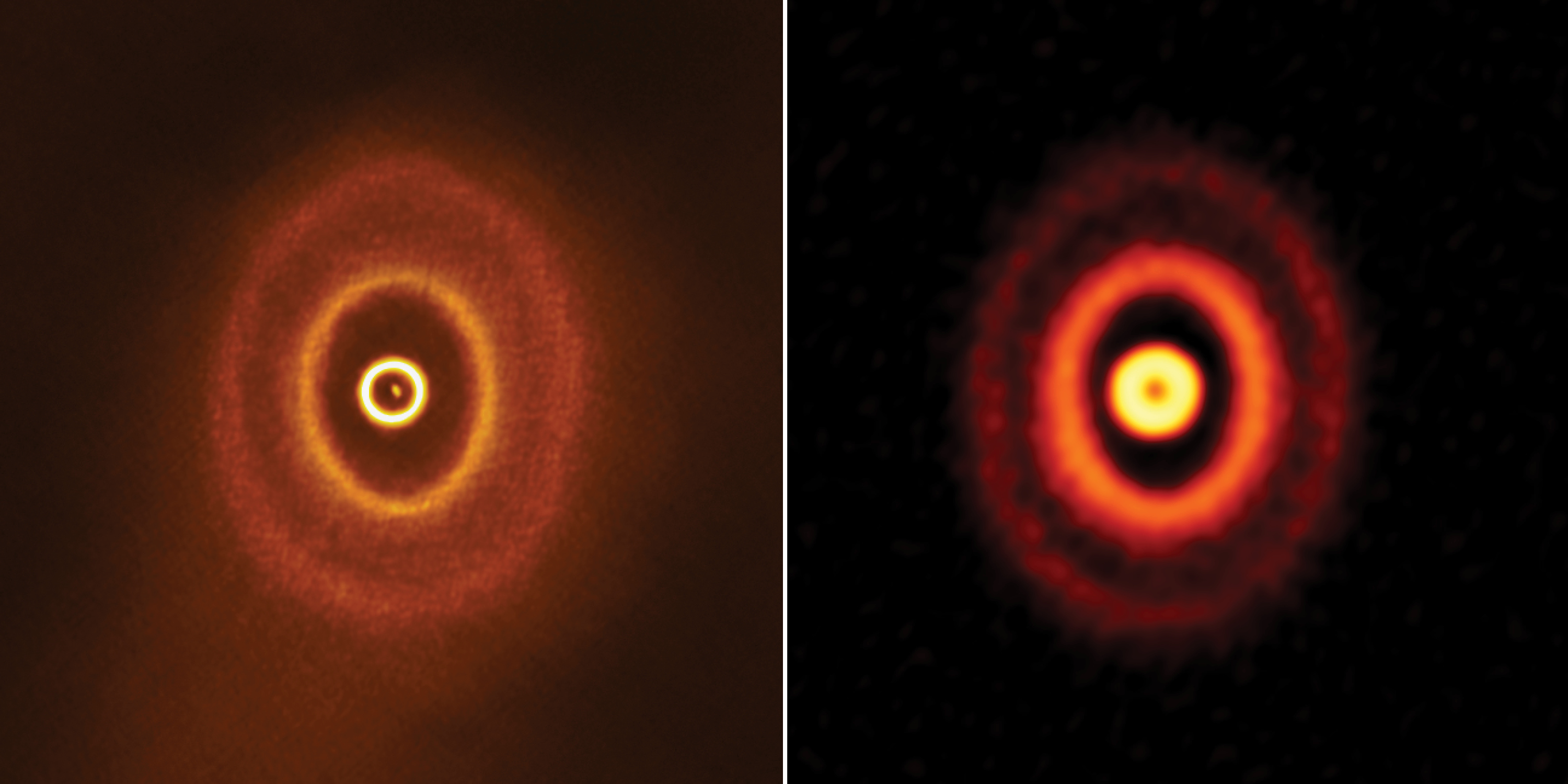
ALMA Discovers Misaligned Rings in Planet-Forming Disk Around Triple Stars
Using the Atacama Large Millimeter/submillimeter Array (ALMA), two teams of astronomers have for the first time discovered a planet-forming disk with misaligned rings around a triple star system, called GW Orionis. The astronomers give two possible scenarios for the misalignment: either…

ALMA Captures Stirred-Up Planet Factory
Planet-forming environments can be much more complex and chaotic than previously expected. This is evidenced by a new image of the star RU Lup, made with the Atacama Large Millimeter/submillimeter Array (ALMA). All planets, including the ones in our Solar System,…
Stellar Fireworks Celebrate Birth of Giant Cluster
Astronomers created a stunning new image showing celestial fireworks in star cluster G286.21+0.17.
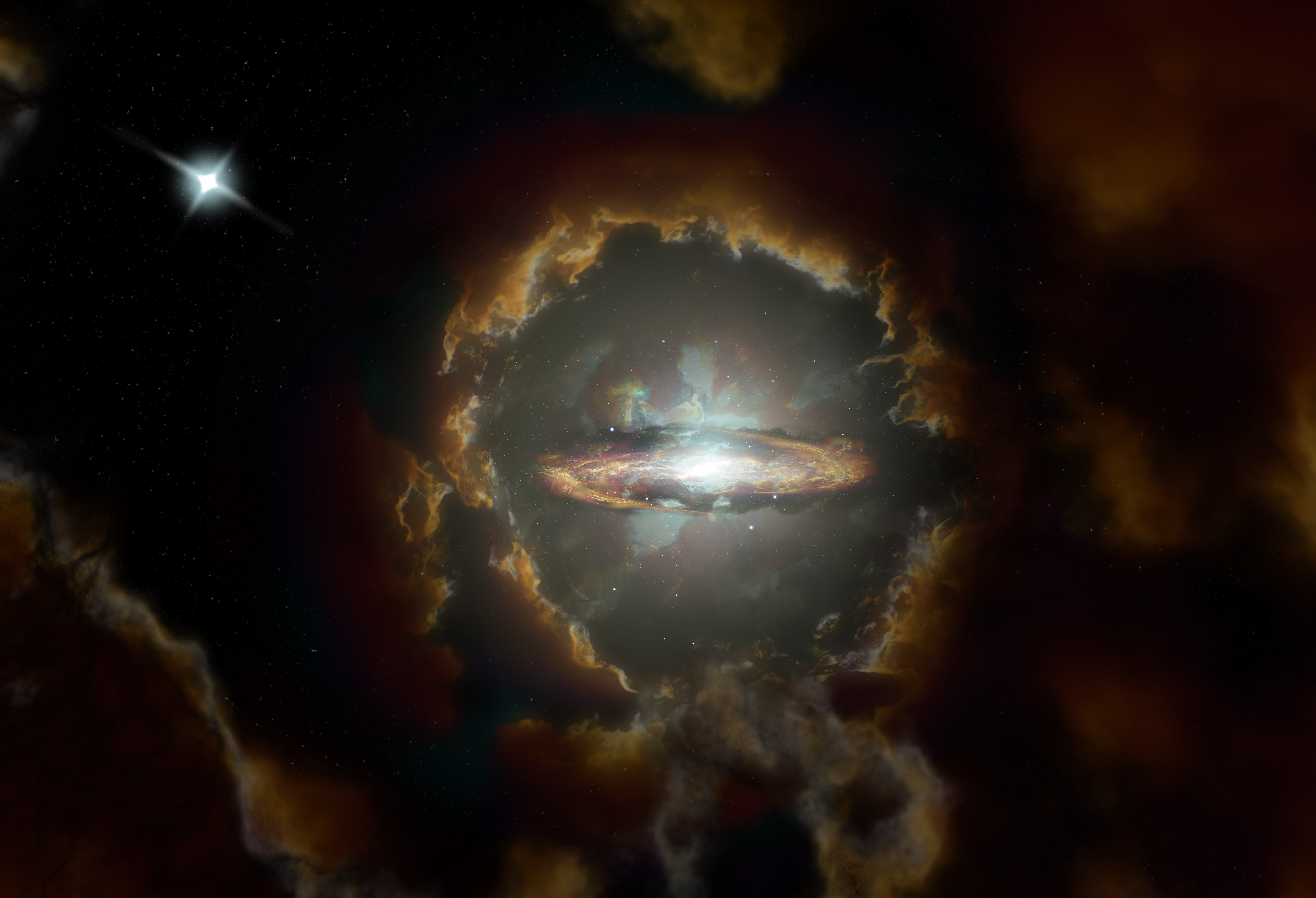
ALMA Discovers Massive Rotating Disk in Early Universe
In our 13.8 billion-year-old universe, most galaxies like our Milky Way form gradually, reaching their large mass relatively late. But a new discovery made with the Atacama Large Millimeter/submillimeter Array (ALMA) of a massive rotating disk galaxy, seen when the universe was only ten percent of its current age, challenges the traditional models of galaxy formation. This research appears on 20 May 2020 in the journal Nature.
ALMA Reveals Unusual Composition of Interstellar Comet 2I/Borisov
A galactic visitor entered our solar system last year – interstellar comet 2I/Borisov. When astronomers pointed the Atacama Large Millimeter/submillimeter Array (ALMA) toward the comet on 15 and 16 December 2019, for the first time they directly observed the chemicals stored inside an object from a planetary system other than our own. This research is published online on 20 April 2020 in the journal Nature Astronomy.
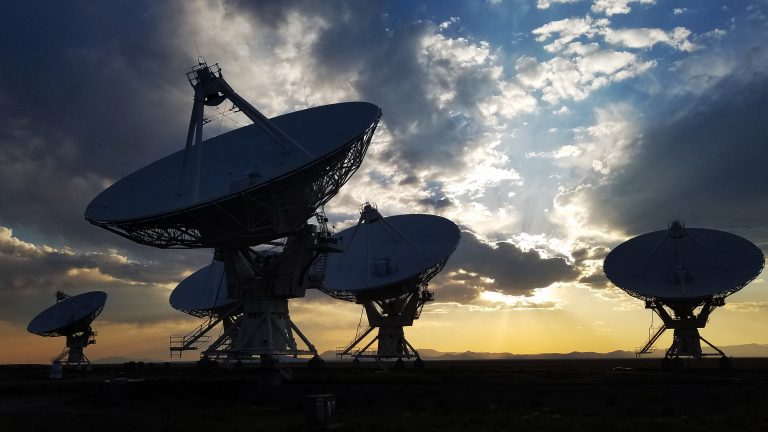
NRAO’s Central Development Laboratory: Making the Invisible Visible
Nestled among the hills of the University of Virginia campus are a couple of nondescript buildings. They are home to NRAO’s Central Development Laboratory (CDL). The buildings are easy to overlook, just as it is easy to overlook the work done by CDL. We see photographs of the radio dishes at Atacama Large Millimeter/submillimeter Array (ALMA) and the Very Large Array (VLA) under a starry sky, and the beautifully rendered scientific images they produce. But between these two extremes is a complex set of processes that transform the faint radio signals of distant space into usable scientific data. Achieving that transformation effectively is one of CDLs most important jobs.
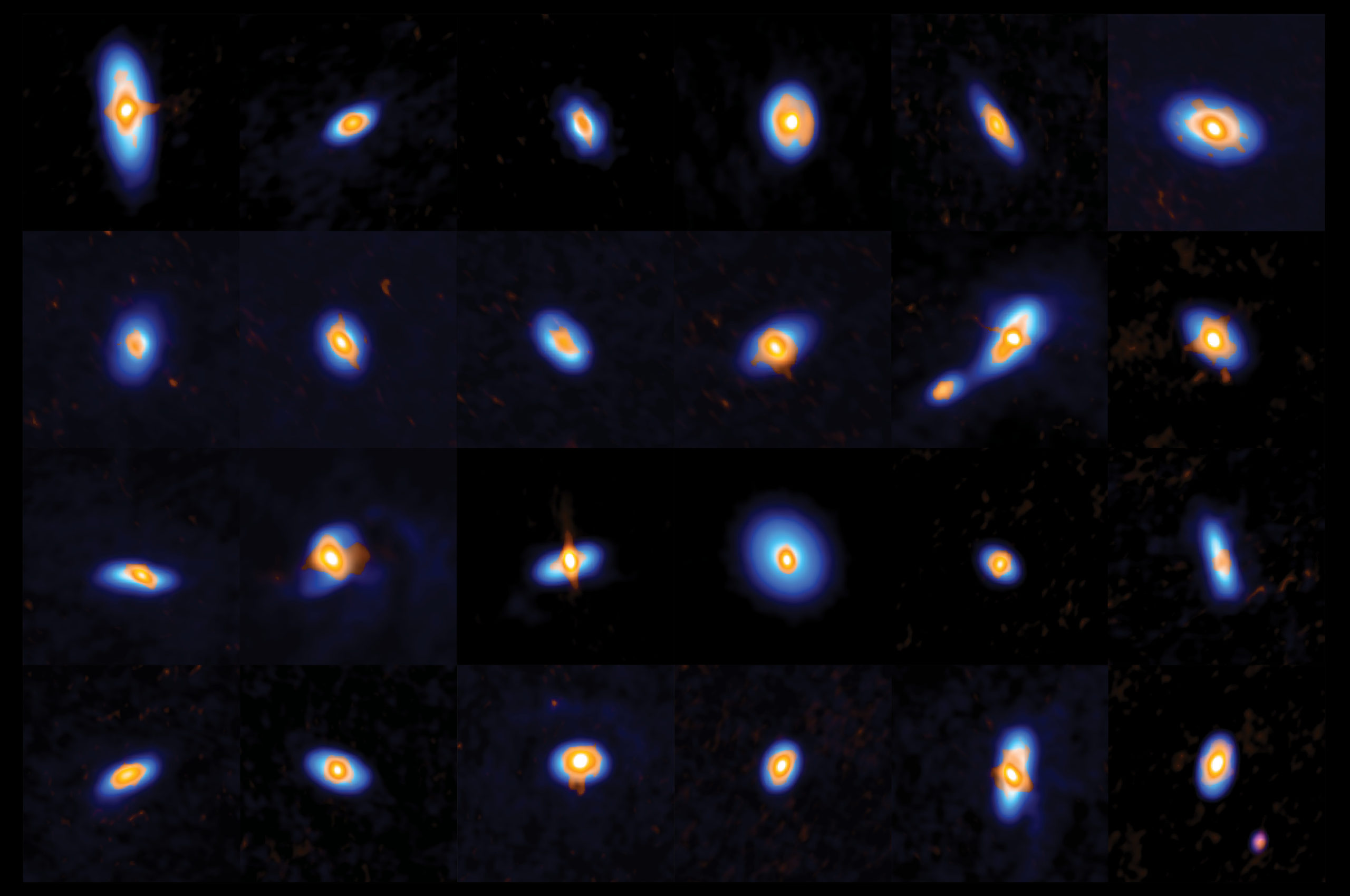
How Newborn Stars Prepare for the Birth of Planets
An international team of astronomers used two of the most powerful radio telescopes in the world to create more than three hundred images of planet-forming disks around very young stars in the Orion Clouds. These images reveal new details about the birthplaces of planets and the earliest stages of star formation.
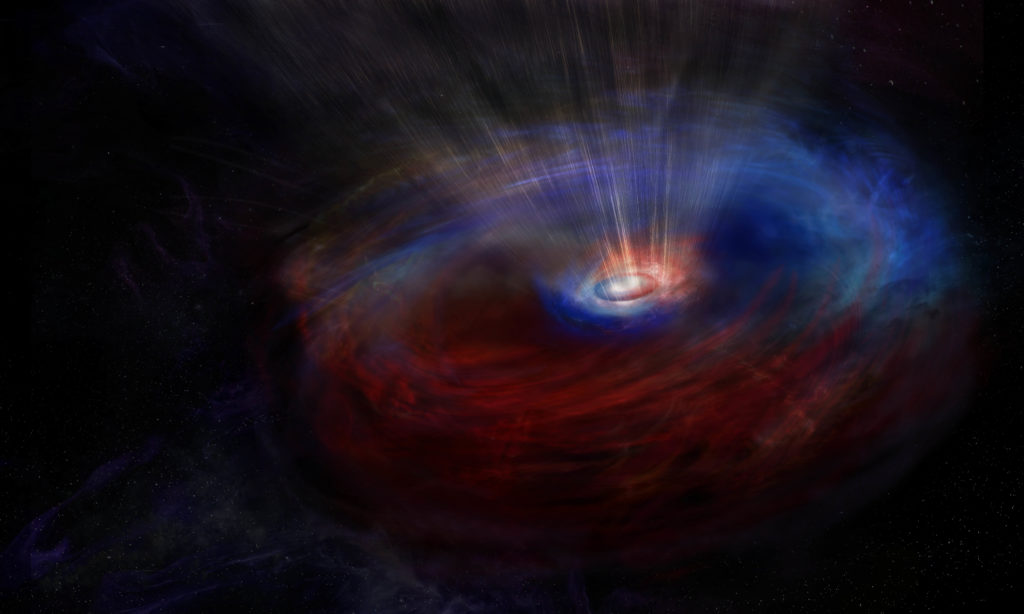
Going Against the Flow Around a Supermassive Black Hole
At the center of a galaxy called NGC 1068, a supermassive black hole hides within a thick doughnut-shaped cloud of dust and gas. When astronomers used the Atacama Large Millimeter/submillimeter Array (ALMA)
to study this cloud in more detail, they made an unexpected discovery that could explain why supermassive black holes grew so rapidly in the early Universe.
“Thanks to the spectacular resolution of ALMA, we measured the movement of gas in the inner orbits around the black hole,” explains Violette Impellizzeri of the National Radio Astronomy Observatory (NRAO), working at ALMA in Chile and lead author on a paper published in the Astrophysical Journal. “Surprisingly, we found two disks of gas rotating in opposite directions.”